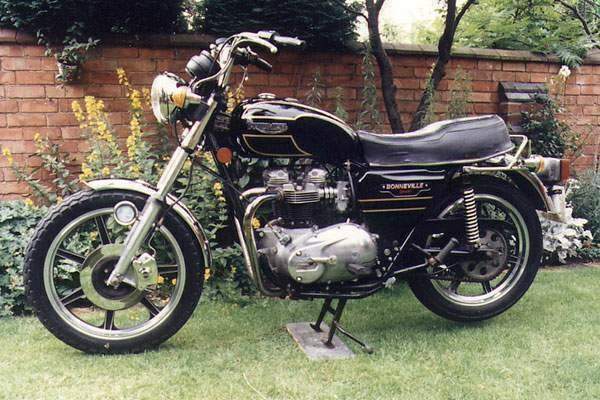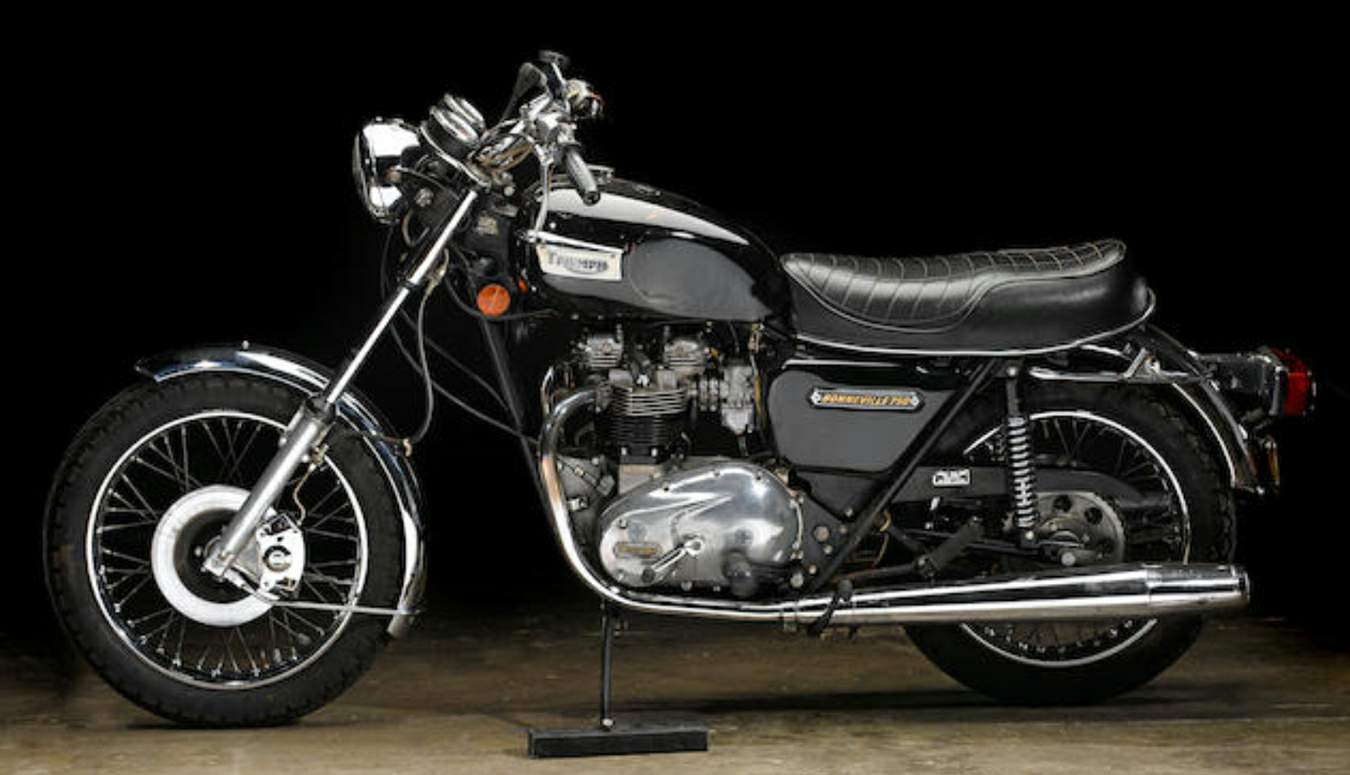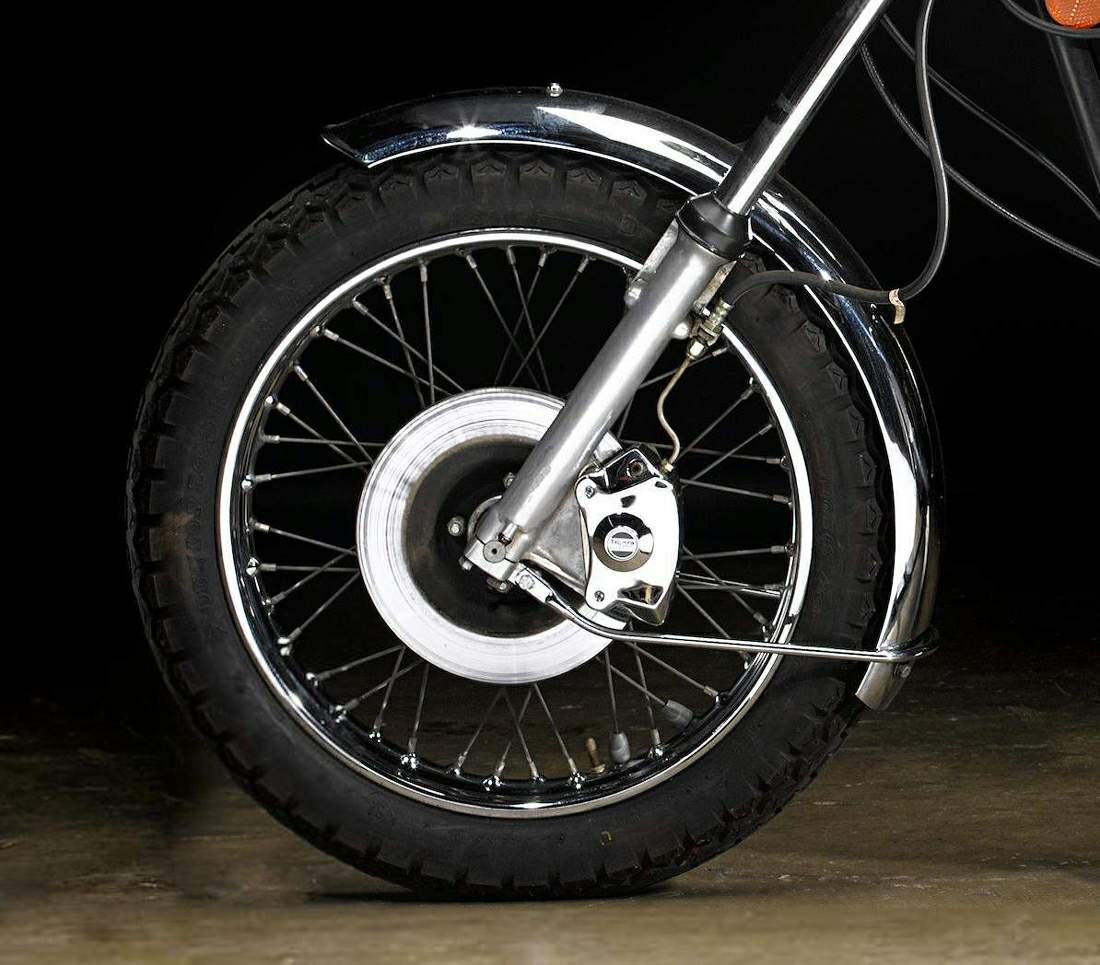
|
|
|
|
|
|
Classic Bikes
Custom Bikes
Individual
Racing Bikes AJP
AJS
Aprilia
Ariel
Avinton / Wakan
Bajaj
Benelli
Beta
Bimota
BMW
Brough Superior
BRP Cam-Am
BSA
Buell / EBR
Bultaco
Cagiva
Campagna
CCM
CF Moto
Combat Motors
Derbi
Deus
Ducati
Excelsior
GASGAS
Ghezzi Brian
Gilera
GIMA
Harley Davidson
Hero
Highland
Honda
Horex
Husaberg
Husqvarna
Hyosung
Indian
Jawa
Kawasaki
KTM
KYMCO
Laverda
Lazareth
Magni
Maico
Mash
Matchless
Mondial
Moto Guzzi
Moto Morini
MV Agusta
MZ / MuZ
NCR
Norton
NSU
Paton
Peugeot
Piaggio
Revival Cycles
Roland Sands
Royal Enfield
Sachs
Sherco
Sunbeam
Suzuki
SWM
SYM
Triumph
TVS
Ural
Velocette
Vespa
Victory
Vincent
VOR
Voxan
Vyrus
Walt Siegl
Walz
Wrenchmonkees
Wunderlich
XTR / Radical
Yamaha
Zero
Video
Technical
Complete Manufacturer List
|
Triumph Bonneville 750 T140D
|
|
Make Model |
Triumph Bonneville 750 T140D |
|
Year |
1979 - 80 |
|
Engine |
Four stroke, parallel twin, OHV, 2 valves per cylinder |
|
Capacity |
744 cc / 45.4 cu in |
| Bore x Stroke | 76 x 82 mm |
| Compression Ratio | 8.6:1 |
| Cooling System | Air cooled |
|
Induction |
2 x 30 mm Amal carburetors |
|
Ignition |
Battery / dual coil / dual points / Lucas |
|
Starting |
Electric and kick |
|
Max Power |
40.3 kW / 54 hp @ 6200 rpm |
|
Max Torque |
56.6 Nm / 5.77 kgf-m / 41.8 ft-lb @5500 rpm |
|
Clutch |
Wet, multiplate |
|
Transmission |
5 Speed |
|
Final Drive |
Chain, 106 links |
|
Gear Ratios |
1st 12.25 / 2nd 8.63 / 3rd 6.58 / 4th 5.59 / 5th 4.70:1 |
| Frame | Tubular steel, double front downtubes, oil bearing large tube backbone |
|
Front Suspension |
Telescopic forks |
|
Rear Suspension |
Swingarm, Girling shocks, 3-way spring preload adjustable |
|
Front Brakes |
Single 254 mm disc, 1 piston caliper |
|
Rear Brakes |
Single 254 mm disc, 1 piston caliper |
|
Front Tyre |
3.25-19 |
|
Rear Tyre |
4.00-18 |
| Rake | 28o |
| Trail | 109 mm / 4.3 in |
| Wheelbase | 1422 mm / 56 in |
| Dimensions |
Length: 2220 mm / 87.5 in Width: 840 mm / 33.0 in |
| Seat Height | 813 mm / 32.0 in |
|
Dry Weight |
200 kg / 441 lbs |
|
Fuel Capacity |
18.2 Litres / 4.8 US gal / 4.0 Imp gal |
| Consumption | 5.5 L/100 km / 18 km/l / 42 US mpg / 51 Imp mpg |
| Top Speed | 190 km/h / 118 mph |
For just two years from 1979 the T140D
Specials took their place among these 750 Bonnevilles. The Special
was essentially a styling exercise triggered by Yamaha's successful
XS650 Special but it contained features which would become standard
on the stock T140E. The Bonneville Specials were strikingly finished
in gold-lined black, with seven-spoke US Lester mag alloy wheels,
and a carefully tuned two-into-one exhaust. The T140D ran
ungaitered, polished forks supporting both the handsome black and
chrome wheels and a truncated chrome mudguard held by just its
central bracing strip. Unlike the UK versions of the Special, which
failed to hit the spot aesthetically, the early US ones looked
stunning.
They rode well enough, too. I took one
snarling through the woods one winter morning some years back. That
was when the time-warp effect hit me. It wasn't down to the special
beech woods, or the ruined abbey hidden in the folds of the weald --
or even to the Triumph's 1937-based motor. No, it was the result of
having read an awful lot of motorcycle magazines over the years, as
well as putting in the miles recently on relatively modern
motorcycles.

Suddenly, I felt myself in the riding
boots of a road-tester back in 1979, when the T140D was new. For
this one was as good as new -- in fact as it had been fully restored
it was better, in some respects.
And it felt so rough!
Now I understood the dilemma of the poor
old late 1970s hacks. Like most British bikers, despite hard-nosed
realism about the way the Japanese had sped ahead of the home
industry for a decade, and about the limitations of the remnant of
that industry which survived, most journos were aching for Meriden
to make a go of it.
But there was no getting round the facts.
This was one harsh ride. The suspension at both ends was
unforgiving, and accelerating through the woods was distinctly
inhibited by the bike bouncing from tree-root to buried tree-root,
particularly at the back end. The 750 engine rattled, tinkled and
clattered, and there was also a rattle from the from the front
mudguard. Even the new disc pads, with no accumulation of dust and
road filth, were loose in their housings and contributed to the
soundtrack.
Still, it soon turned into a nice ride.
After an interesting minute trying to kickstart the T140 while the
kill switch was set at 'off' (John South, the owner and restorer of
this bike, liked to have his little joke), it started easily enough,
though the engine, with its twin, smooth-bore Amal Mk2 carbs on the
new-for-1979 parallel port cylinder head, took its time to warm up.
So that was a factor in the initial harshness. Frank-the-ex-editor
also suggested that alloy wheels, those good-looking seven-spoke
Lester jobs, gave a less forgiving ride than spoked ones.

The road was slippery so I was on the
lookout for negative feedback from a hopping rear end. The factory
had soon discovered that the Special's fat 4.25 x 18-inch rear tyre
had created rear end and other problems cornering. The taller tyre
also fouled the mudguard and caused some punctures.
The US-spec exhaust system marked
significant progress for the Bonnie and followed months of
development work to achieve environmental acceptability, more
mid-range torque and additional ground clearance. The pipes were
positively located in the head, clamped into spigots which were
screwed into the exhaust ports. No balance tube connected the pipes,
which angled in towards each other until they joined in front of the
bottom of the downtubes. They then passed the downtubes on the right
so that a re-designed centre-stand which tucked in better could be
used.
The pipes then ran into a single silencer
which was a new design of two-stage megaphone with an end-cap.
Although this silencer contributed towards a 25lb weight saving over
the previous model Bonnie, and made wheel removal easier, and
improved mid-range torque, it did restrict top end performance. This
meant that T140Ds were pushed to top 100mph -- and the exhaust
system could still ground quite badly. This was especially ironic in
view of the revised centre-stand and the fact that the footrests had
been raised by two inches in pursuit of ground clearance.
The siamesed system did the job in
improving mid-range power at around 4000rpm, however, where the
Special pulled torquily. There was nice acceleration in third gear,
fourth and top, and once warmed through it was smooth enough at
60mph, for a 750 Bonnie. Edging up to 70 on a long straight showed
that this velocity was achieved in top at a laudably lazy engine
speed, only just over 4000rpm.
Clutch and gearchange were good, light and
smooth, and both seat and riding position with the high bars were
comfortable at these speeds. The single AP Lockheed discs front and
rear felt characteristically wooden, but were effective enough --
and they were nearly new on this bike. John had recently replaced
the master cylinders, brake hoses and calipers with standard AP
items, and fitted new seals as part of a tip-to-toe restoration.

Another new feature for the T140D was the
Special's stepped, poorly proportioned, over-tall seat which let it
down in the styling stakes in the pursuit of comfort. The factory
was unable to afford top quality foam throughout, but the rider's
portion at least was treated to 'cold cure' inserts beneath a new
cross-hatched seat cover. The pleasing, wasp-waisted shape of the
US-spec tank had an additional bonus though -- since it was too
narrow at the rear to be clamped between the knees, you didn't get
any vibes through it.
The Special's black paintjob was reported
to wear rather worse than the standard Bonnie's. John's example,
however, did not need its tank and sidepanels to be re-painted,
testimony to some surviving craftsmanship at Meriden. Even so, the
T140D's frame was originally powder-coated and, in common with most
Triumphs of that era, you could soon peel the coating off -- John
pulled a piece six inches long off the top tube before re-stoving.
Any details of that sort were soon
forgotten once you began to experience the engine's sheer lustiness,
best sampled up hills. It was harsh on the over-run at first, but
this was just a Triumph telling me how it wanted to be ridden --
accelerate! It was a nice squirter, too, so light (that 25lb saving
over the stock T140E) and flickable, and if the high-barred front
end could wriggle when you put the power on in a bend, then it was a
controllable part of the fun.
On a fine day, on a good A-road, you'll
still get the fun of the big Triumph's looks, lightness, brakes,
handling, righteous sound and, above all, the brute surge of power
when you grabbed a handful of throttle, a meaty response for which
there is no substitute, until it's brought up short around 80mph by
the vibration. Crude it might be, but the experience is undeniably
effective and exhilarating -- more so on the Special than on the
subsequently sanitised 'E' variants.
Source: Real Classic

|
Any corrections or more information on these motorcycles will be kindly appreciated. |